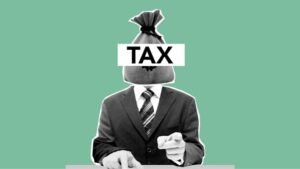Everybody has a side gig these days it seems like Designing logos after your day job, tutoring online, selling handmade crafts and consultancy on the side, freelancing is part and parcel of modern working life in the UK.
However, when it comes to the additional tax that one has to pay in such a situation, which one has to do usually pertains to the side activity of freelancing, a question arises, and it goes as follows: what tax do I pay in such a case of doing freelancing part time?
It is not always so simple. The amounts of income that you earn are treated differently depending on whether you are already in employment, the level of your income and the amount of allowances that you should be entitled to. So, let us see what it all boils down to.
Table of Contents
ToggleWhy HMRC are Appealing to Side Income
This is because when you have a 9 to 5 job you may simply think that PAYE (Pay As You Earn) covers your tax code in full. Paying tax and National Insurance it comes to, but your employer has sucked that off your wages before they even reach your bank.
Freelance money is not a part of that system. It is treated as self-employed income whether you are doing small jobs every so often or not. HMRC expects you to report them.
That is why, in case you earn some money in addition to your salary, you might have to report about Self Assessment and pay tax on these profits.
The Trading Allowance: Tax Free Side Earnings 1,000
Here is some good news, UK has a 1,000 trading allowance.
It is that you only need to declare and pay tax on the casual freelance earnings on 6 April to 5 April tax year in case it exceeds 1,000 when calculated.
For example:
- You make £750 per weekend on side photograph jobs beyond your fulltime work.
- Since that is not more than 1,000, you do not have to register and file a return to HMRC regarding the income.
But once you are over the amount of 1,000 anything can happen.
If You earn More Than 1000 Pounds as Freelance
When this additional income exceeds £1,000, however, your side hustle should be registered as self-employed and require you to complete a Self Assessment tax return annually.
This even when you only freelance part of the time and may consider yourself as not really owning a business. HMRC look at it differently- if money is changing hands, it is taxable income.
How It Works in the Real Life:
Let’s say:
- Your other full time job salaried at 32,000 a year (pay as you earn).
- You make 5 000 as freelance graphic designer.
- Your employment income has been-already-taxed However, your freelance income will be on top e.g.nbsp several thousand pounds, so your total taxable income becomes 37,000 pounds.
The resulting sum of £5,000 will not be free of Income Tax and it will not be free of Class 2 and Class 4 National Insurance contributions depending on the overall profits earned.
Tax Bands are Not Replaced
The freelance earnings are not taxed at an individual tax rate. Rather, it is added to your other income and and taxed under normal thresholds.
The 2025/26 rates are:
6 – 07,570: Tax free (Personal allowance)
- Over 49,431: 20-32.5 per cent to 41,431 20 (basic)
- 40% (higher rate) 50,271 -125140 40
- Over 125,140: 45 % (additional rate)
So, it means that, when your earned money alone makes you pay more tax within the basic or higher-rate bracket, the freelance income will be calculated at the same rate.
Don t Forget National Insurance
Joining Income Tax, freelancers might be forced to pay National Insurance:
- Class 2 NICs: You will have to pay 3.45 a week in case your profits are more than 6,725 a year.
- Class 4 NICs: 9 percent (of earnings exceeding 12,570) and 2 percent (of the earnings above 50,270).
In our previous example, you would not pay any Class 2 or Class 4 NICs on freelance profit of 5,000. However, in case you was earning 15000 pounds, both of them would be used.
Put in Some Claims to Minimize Your Taxes
A major benefit of being a freelancer is you can write off business related expenses against your income, prior to tax being deducted.
All costs that can be claimed are:
- Software, subscriptions and tools you use at work
- A share of home office expenses (electricity, internet etc.)
- Business travel costs incurred on the client visits
- Marketing, advertising expenses
Let it be, you are earning 5,000 on a freelance basis but use 800 on software and supplies, you will only pay taxes on 4,200 income.
Tips to be practiced by freelancers who earn a supplementary income
Records Day One Keep
Get an overview of all invoices, payments, and expenses, even when you are more likely to have a small increase. HMRC is allowed to request evidence many years on.
Save Money in Tax
It is a good rule of thumb to put 20-30 percent of your freelance earnings in a separate account. By doing, you will never be surprised by your tax.
Make sure to file Your Self Assessment on time
Deadlines matter. Paper-based tax returns must be filed by 31 October and electronic-based tax returns by 31 January after the tax year. Defaulted deadlines take the form of penalties
Check Your Tax Code
In some cases, HMRC alters your tax code as a way of recovering freelance tax over your wages. In other occasions, you must make direct payments.
Seek Professional Guidance in excess of Required
Tax was not simple and easy to be complicated when the income brushes through various amounts of money. An accountant will be able to ensure that you claim all you should.
Final Thoughts
Side freelancing can be an awesome way to supplement your income, pursue a passion and gain autonomy. With that free will is responsibility.
When you get to the point where you ask: Freelancing on the side: what tax do I pay? then we can say:
- Below 1,000 you have nothing to worry about.
- The gross amount is more than 1,000, then you have to register and submit a Self Assessment.
- Side income goes to your supplementary salary and it is taxed at the ordinary rates.
- It will be much easier when the records are maintained and money saved.
By keeping current on your commitments, you can get to enjoy the rewards of your side hustle without having the shock of an unexpected tax that might come nerve wracking.





